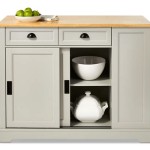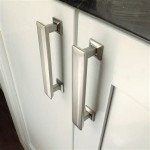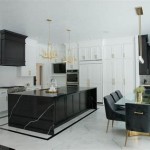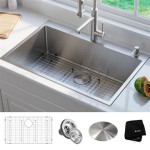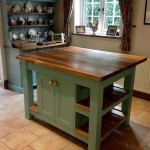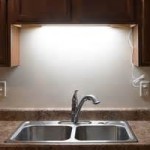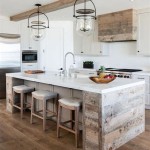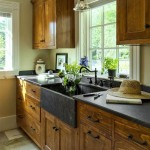Small Kitchens, Big Style: Mastering White Cabinets
Small kitchens present unique design challenges. Maximizing limited space while maintaining functionality and aesthetic appeal requires careful planning and smart choices. One design strategy consistently proves successful: utilizing white cabinets. White cabinets offer numerous benefits in small kitchens, effectively amplifying light, creating a sense of spaciousness, and providing a versatile backdrop for various design styles.
The effectiveness of white cabinets goes beyond simple aesthetics. They contribute to the overall functionality and perceived comfort of a small kitchen. Understanding the nuances of selecting and implementing white cabinets is crucial for achieving a successful kitchen design that optimizes both form and function.
This article will explore the advantages of using white cabinets in small kitchens, detailing key considerations for material selection, hardware choices, and complementary design elements. By understanding these principles, homeowners and designers can create visually appealing and highly functional small kitchens that feel larger and more inviting.
The Illusion of Space: How White Cabinets Maximize Light
One of the most significant advantages of white cabinets in a small kitchen is their ability to reflect light. Darker colors absorb light, making a space feel smaller and more enclosed. White, conversely, reflects light, bouncing it around the room and creating the illusion of greater space. This is particularly beneficial in kitchens with limited natural light, where white cabinets can help to brighten the area and make it feel more open and airy.
To maximize this effect, consider the type of white finish used. Semi-gloss or high-gloss finishes reflect more light than matte finishes. While high-gloss can be more difficult to keep clean, the increased light reflection can be worth the extra effort in a particularly dark or cramped kitchen. Strategically placed lighting, such as under-cabinet lighting and recessed lighting, further amplifies the effect, ensuring the kitchen remains bright and inviting even in the absence of natural light.
The placement of cabinets also plays a role. Upper cabinets, especially those extending to the ceiling, can amplify the feeling of height and spaciousness when finished in white. Open shelving, interspersed with white cabinets, can provide visual breaks and prevent the kitchen from feeling too monolithic. Reflective backsplashes, such as glass tiles or stainless steel, can further enhance the effect of light reflection, complementing the white cabinets and contributing to a brighter, more spacious feel.
Material Matters: Selecting the Right White Cabinet Material
The material of white kitchen cabinets directly impacts their durability, maintenance, and overall aesthetic. Several options are available, each with its own set of advantages and disadvantages. Understanding these differences is crucial for making an informed decision that aligns with budget, lifestyle, and design preferences.
Solid wood cabinets are a classic choice, offering durability and a timeless appeal. However, solid wood can be expensive and susceptible to warping or cracking in humid environments. Painted wood cabinets provide a similar aesthetic but at a potentially lower cost. The quality of the paint finish is crucial for longevity, as poorly applied paint can chip or peel over time. Look for cabinets with a multi-layer paint finish and a durable topcoat for increased resistance to wear and tear.
Medium-density fiberboard (MDF) is a popular choice for white cabinets due to its smooth surface and resistance to warping. MDF is also generally more affordable than solid wood. However, MDF is more susceptible to water damage, so it is important to ensure that the cabinets are properly sealed and protected from moisture. Thermofoil cabinets, which consist of an MDF core wrapped in a layer of vinyl, are another cost-effective option. Thermofoil is durable and easy to clean, but it can be susceptible to heat damage and peeling, particularly near ovens and stovetops.
Laminate cabinets are another durable and affordable option. Laminate is resistant to scratches, stains, and moisture, making it a practical choice for busy kitchens. While laminate used to be considered less aesthetically pleasing than other materials, advancements in manufacturing have resulted in high-quality laminates that closely mimic the look of wood or other materials. When selecting a cabinet material, consider the overall design style of the kitchen and the level of maintenance required. Solid wood and painted wood offer a classic and sophisticated look, while MDF, thermofoil, and laminate provide durable and budget-friendly alternatives.
Hardware Harmony: Choosing the Right Accents
Hardware choices play a significant role in the overall aesthetic of white kitchen cabinets. Knobs, pulls, and hinges can add personality and style, transforming simple white cabinets into a design statement. Consider the overall design style of the kitchen when selecting hardware. For a traditional kitchen, ornate knobs and pulls in finishes like antique brass or oil-rubbed bronze can add a touch of elegance. For a modern or contemporary kitchen, sleek and minimalist hardware in finishes like stainless steel or brushed nickel can create a clean and sophisticated look. Black hardware provides a striking contrast against white cabinets, adding a touch of drama and visual interest.
The size and shape of the hardware should also be considered. Smaller kitchens may benefit from smaller, more streamlined hardware that doesn't overwhelm the space. Larger kitchens can accommodate larger, more decorative hardware. Consider the ergonomics of the hardware. Knobs and pulls should be comfortable to grip and easy to use. Test out different options before making a final decision to ensure that they are both aesthetically pleasing and functional.
Beyond knobs and pulls, consider the hinges. Concealed hinges create a clean and seamless look, while exposed hinges can add a touch of vintage charm. The finish of the hinges should complement the other hardware in the kitchen. Consider the style and material of the faucet and other kitchen accessories when selecting hardware. Coordinating these elements will create a cohesive and harmonious design.
Complementary Colors: Balancing White with Other Design Elements
While white cabinets provide a clean and versatile foundation, the success of a small kitchen design depends on how white is balanced with other colors and textures. Incorporating complementary colors can add depth, visual interest, and personality to the space. Consider the overall mood and style of the kitchen when choosing complementary colors. For a bright and airy feel, pair white cabinets with light and pastel colors. For a bolder and more dramatic look, use darker colors as accents.
The backsplash is a prime opportunity to introduce color and texture. A colorful tile backsplash can add a pop of personality to the kitchen, while a natural stone backsplash can create a more organic and earthy feel. Consider the pattern and texture of the backsplash tile. A simple subway tile backsplash is a classic and timeless choice, while a more intricate patterned tile can add visual interest. The countertop is another key element that can complement white cabinets. Granite, quartz, and marble are all popular choices for countertops. Choose a countertop material that is durable, easy to clean, and complements the overall design style of the kitchen. Darker countertops can provide a striking contrast against white cabinets, while lighter countertops can create a more seamless and harmonious look.
Adding pops of color through accessories, such as dish towels, kitchen utensils, and decorative items, can further enhance the design. Plants can also add a touch of natural beauty and freshness to the kitchen. Consider the lighting in the kitchen when choosing complementary colors. Natural light will enhance the vibrancy of colors, while artificial light can alter their appearance. Testing color samples in the kitchen under different lighting conditions is recommended before making a final decision.
Smart Storage Solutions: Optimizing Space in Small Kitchens
In a small kitchen, efficient storage is essential. White cabinets can contribute to the sense of spaciousness, but smart storage solutions are crucial for maximizing every inch of available space. Consider incorporating pull-out shelves in base cabinets to make it easier to access items stored at the back. Vertical dividers in cabinets can help to organize baking sheets, cutting boards, and other flat items. Spice racks mounted on the inside of cabinet doors can free up valuable shelf space. Lazy Susans in corner cabinets can maximize storage in awkward spaces.
Utilize wall space by installing shelves or hooks for storing pots, pans, and utensils. Over-the-door organizers can provide additional storage for cleaning supplies or pantry items. Consider installing a pot rack over the island or stovetop to free up cabinet space. Optimize drawer space by using drawer organizers and dividers. Deep drawers can be used to store pots and pans, while shallow drawers can be used to store cutlery and utensils.
Think vertically. Tall, narrow cabinets can provide ample storage without taking up too much floor space. Consider using the space above the refrigerator for storing infrequently used items. Maximize the space under the sink by using organizers designed for cleaning supplies. By incorporating these smart storage solutions, homeowners can create a highly functional and organized small kitchen, even with limited space.
Strategic Lighting: Illuminating Your White Kitchen
Proper lighting is crucial in any kitchen, but it's even more critical in a small kitchen with white cabinets. Strategic lighting can enhance the sense of spaciousness, improve functionality, and create a more inviting atmosphere. Layering different types of lighting is essential. Ambient lighting provides overall illumination, task lighting illuminates specific work areas, and accent lighting adds visual interest.
Recessed lighting is a popular choice for ambient lighting in kitchens. Recessed lights provide even illumination without taking up valuable space. Under-cabinet lighting is essential for illuminating the countertop, making it easier to prepare food. Pendant lights over the island or peninsula can provide both task lighting and accent lighting. Consider installing a dimmer switch on the ambient and task lighting to adjust the brightness according to the needs.
Choose light bulbs with the appropriate color temperature. Warm white light creates a cozy and inviting atmosphere, while cool white light provides a brighter and more energizing feel. Consider using LED light bulbs, which are energy-efficient and long-lasting. Natural light is also important. Maximize natural light by keeping windows clean and unobstructed. Consider installing a skylight or sun tunnel to bring more natural light into the kitchen. Proper lighting can transform a small kitchen with white cabinets into a bright, spacious, and functional space.
:strip_icc()/102812862-4f6320a9e10040edac974aa03af64d36.jpg?strip=all)
30 White Kitchen Ideas To Suit Any Style

10 Best Small Kitchen Ideas With White Cabinets

How To Coordinate Your Kitchen With White Cabinets

What Paint To Use For Small Kitchens And White Cabinets

7 Amazing Tips For Decorating A Small Kitchen With White Shaker Cabinets

Why Use White Cabinets In A Traditional Kitchen Wood Co

White Kitchen Cabinets Premium Quality And Timeless Appeal

The All White Kitchen 7 Ways To Design Yours Timelessly
:strip_icc()/102029600-e32e7478c69749e9bf16bff65f19041e.jpg?strip=all)
30 White Kitchen Ideas To Suit Any Style

46 Elegant Small White Kitchen Design Ideas For Modern Home

